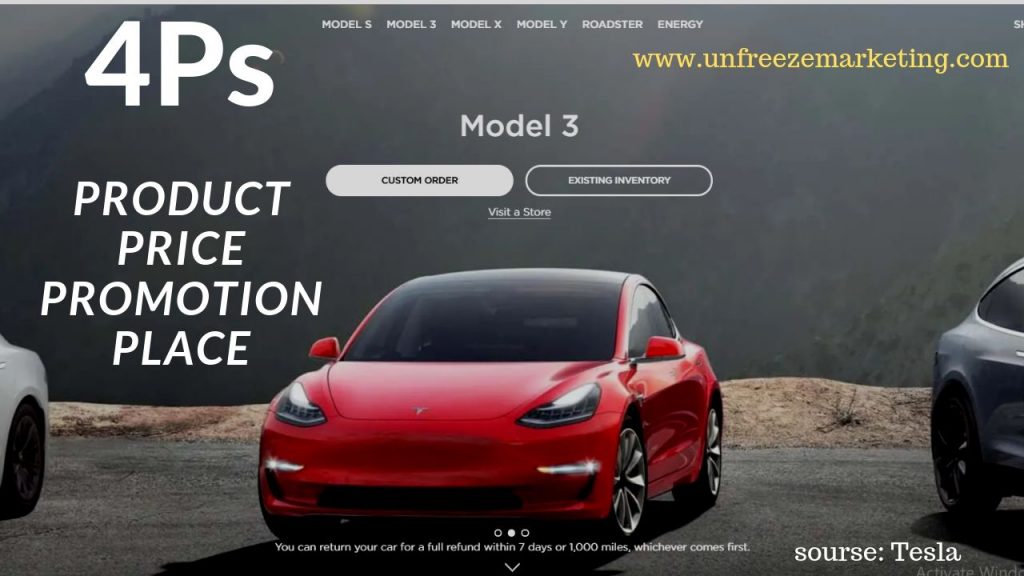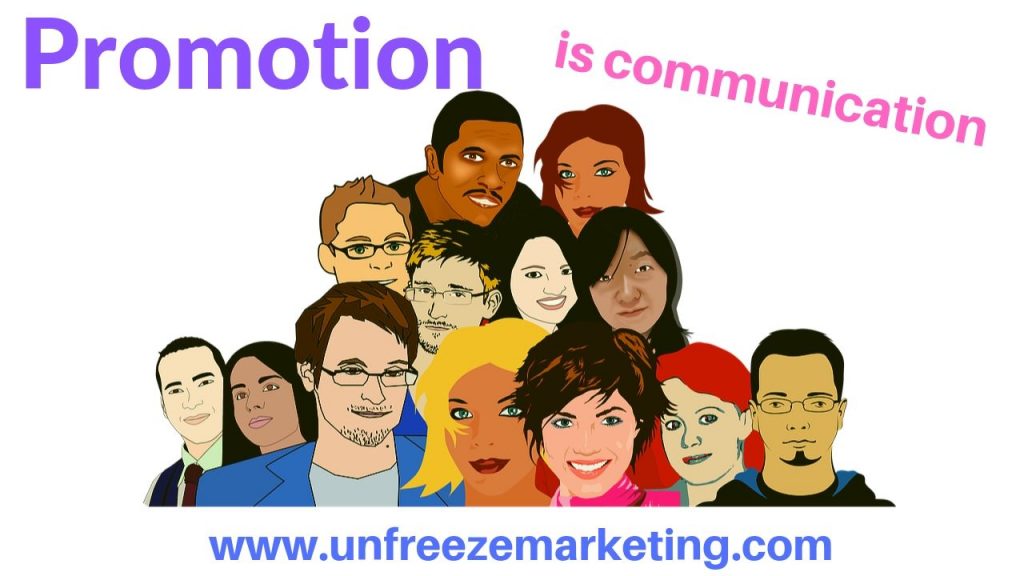The marketing mix generally includes the 4 Ps, and sometimes the model is extended to have 7 Ps. I will explain the 7 Ps in a separate section here. The last part of this article is about the 4Cs of marketing.
Table of Content
- What is Marketing Mix? Definition
- 4 Ps of Marketing Mix (origin)
- Product
- Price
- Promotion
- Placement
- 7 Ps of the marketing mix
- 4 CS of marketing
What is Marketing Mix? Definition
A marketing mix is made of 4 basic elements, also known as the marketing mix elements. The concept provides the basis for a marketing strategy in a business.
Marketing Mix is a marketing toolbox that consists of product, price, promotion, and place, and is used by a business to satisfy a consumer’s needs and wants.
4 Ps Marketing Mix Explained
4 Ps or the 4 Ps model is a very popular marketing concept. The concept is extensively covered in a marketing course at a business school. It was E. Jerome McCarthy, an American professor, who proposed the concept of 4Ps in the 1960s.
Here are the 4 Ps:
- Product
- Price
- Promotion
- Place
Let’s explore the marketing mix elements in detail now.

#1 Marketing Mix: Product
A product is anything that you offer to the market and it can be an idea, place, experience, or tangible good, or service.
A product is the beginning of a marketing or business activity. Every business must offer a product to serve their customer’s needs or wants. Therefore, a business always starts with the product idea and conducts rigorous market research to find or refine one.
There are several types of products. Some are tangible(physical) goods while others are intangible such as services.
Often, you will find a combination of a tangible product and an intangible product (i.e service).
For example:
when you order a burger in a restaurant, you get a burger (physical product) but along comes the service. The services part of a product includes how a burger is delivered. It means the staff of the restaurant delivers it on time. They are polite and friendly. The ambiance is pleasing and comforting.
It depends on the nature of a product as well. For example, some tech companies sell you a tangible product such as a cellphone but the service part comes after you purchase the product, and it includes a warranty and repair services.
The product, that a business offers to a market, should always solve a problem. If a product can’t provide a solution to a customer’s problem, it would just vanish.
Product Definition
According to Jobber ( 2007, p.326),
‘a product is anything that is capable of satisfying customer needs.’
As an entrepreneur or a marketing manager, it is your responsibility to devise the right combination of products. The product portfolio is often called the product mix. The entrepreneur must always avoid product cannibalization in a given product portfolio.
Product cannibalization occurs when a business offers similar or the same products under different labels or names. When the new product eats the sales of the existing product of the company. Thus the term, cannibalization.
Businesses that have a depth of a product mix i.e they offer too many variations or extensions of products in a category are likely to suffer from cannibalization.
The following are important questions to ask about a product in the marketing mix:
- What is a Product life cycle?
- What is the competition like in the introduction stage of a product?
- Do we have the right packaging and labeling of the product?
- Are we sticking to a failed or a hopeless product?
- Does the product have global potential?
- Is the product environment-friendly?
#2 Marketing Mix: Price

A business and its customers have a mutually profitable relationship that is based on the basic concept of exchange. When a business offers a product, it is satisfying a customer’s need. In return, the customer provides value (i.e amount of money) to the business in the form of revenue and increases the business’ market share. The more satisfied customers you have, the better revenue and market share you will get.
Price carries special importance in the marketing mix of any business. You see, the rest of the Ps are an expense to the business or the entrepreneur. A business has to invest or spend a lot of money on Promotion, product, or placement of the product. However, price is the only P that is about a business revenue and profit. Therefore, it is really important to get the price right.
Sometimes, getting the right price can be the defining factor in business success. For example, in the used car market once you know the right price that you can sell a certain car for, it becomes easy to sell & stay profitable.
There are several pricing strategies that an entrepreneur can employ and a few of them are below:
- Price skimming
- Extremely Low pricing
- perceived value pricing
Price skimming is often suitable for a new product that is innovative. If you have certain product features that others don’t have you can charge high prices and practically skim profit from the market.
For example, Intel has successfully used this pricing strategy. When it would release the fastest and the most powerful processor chip on the market. It would leverage its competitive position. As a result, it could ask for the highest price in the market and customers were happy to pay. Hence, Intel was practically skimming the market.
An extremely low pricing strategy can be used by a new product or new business that would like to enter a market. The low-pricing strategy is devised to gain a quick market share for a new product. Often, the prices get normal once a product has consolidated its position.
Perceived value pricing is, as the name shows, based on the perception of the customers. Often, this pricing strategy is suitable for luxury goods such as Rolex watches. It is more about the branding of the product.
Sometimes an entire country can enjoy a high perceived value. For example, France is known for quality perfume worldwide. People worldwide perceive French perfumes as of high value and are willing to pay more for them.
Here are a few important points for an entrepreneur or the business to manage price:
- Understand the importance of price for branding
- Relation of price to break-even point of business
- Are pricing objectives aligned with the product growth objectives?
#3 Marketing Mix: Promotion

Promotion is an important and perhaps the most visible element of the marketing mix. Promotion is about communicating a business’ product or brand message.
The promotion mix consists of advertising, personal selling, and public relations. Let’s discuss each of the promotion mix elements briefly.
Advertising is a paid form of communication to get a product message in front of the target customers. Advertising is mostly non-personal.
Traditionally advertising was associated with placing adverts on Radio and TV or running ads in the traditional newspaper and magazines. However, a lot has changed due to digital technologies and the internet. Now, businesses can reach their target customers using online or internet marketing.
Whether it is an online marketing or offline marketing, an advertising campaign can have broadly 3 objectives:
- Remind the customers of your product/service
- Inform i.e raise awareness about the product/service
- Persuade or convince to buy from you
Personal selling is often considered the most expensive element in the promotional mix. In fact, it can be a crucial process in the early stages of a business when the entrepreneur is building her business.
The following are some points that a marketing manager can keep in mind to effectively manage a promotional mix of a business:
Can we just go for online promotion?
Should you go for banner adverts or search engine ads?
How much can you spend on FM Radios and what objectives can you achieve?
Can you justify the ad spend or you are just doing it as the competitors are doing so?
What branding objectives can you achieve by the promotion?
How much immediate sales can we get by promotion?
#4 Marketing Mix: Place
Place, the 4th P, in the marketing mix is often not that exciting and many students get bored during the lectures about placement or distribution. At least, this is what I have observed.
It is a boring topic to deal with in the classroom 🙂
Placing a product means creating a distribution channel or network. We are talking about retailers, wholesalers, and distributors.
Placement/distribution can be a defining marketing activity or process for a business in order to compete. Many businesses dominate the market because they have built a great distribution network or power.
Example:
The power of distribution or placement is clearly demonstrated by Unilever or Nestle worldwide. These corporations are difficult to compete against in the channels. They have accumulated great resources around their distribution network and have built strong partnerships in the channel. These big corporations use very aggressive tactics to win over partners in a distribution channel. For example, if a restaurant keeps its PEPSI or Coca-Cola soda, and juices, it gets water for free as an incentive.
There are three broad strategies of placement or distribution that any business can employ in their marketing mix:
- Selective distribution (having select few channel partners)
- Intensive distribution (having as many channel partners as possible)
- Exclusive distribution (having exclusive distribution)
Marketing Mix: 7 Ps

In 1981, Bernard H. Booms and Mary J Bitner upgraded Jerome McCarthy’s 4 Ps model by adding 3 more Ps. That is how they created the 7Ps model of the marketing mix.
The 3 additional Ps are People, Process, and Physical Evidence.
As the additional Ps is about the intangible(i.e services) aspect of a business’ product, therefore, the Booms and Bitner’s model is also called a Service Marketing Mix.
Let’s look at the additional Ps of the service marketing mix now.
People. A great service or product delivery is not possible without people. It’s a challenge to manage a good service consistently because you can’t store services. A service delivered perishes and can’t be repeated by the person who delivers it.
It presents a unique management problem. To be precise, it’s a people problem. Good service all depends on the people who deliver it.
For the same reasons, services are difficult to deliver consistently. It requires highly motivated employees to replicate exactly the same level of quality over and over again. It is normally hard for a human being to stay the same emotionally and mentally.
You can be in a great mood in the morning, but not so in the evening. That’s how humans are, we can’t do anything about it. It is not humanly possible to have the same level of emotion or energy all the time.
However, you can try to manage the problem by introducing a system. A great entrepreneur or business manager would try to introduce basic criteria to encourage service homogeneity. A good training program can go a long way in this case.
In other words, there would be a certain level of service criteria that has to be met by the employees. The staff has to undergo rigorous training to develop the right attitude towards the task. The purpose of the training is normally geared towards homogeneity. The rest is about constant monitoring and control.
Processes. Processes are the business activities, roles, or functions that ensure a smooth product or service delivery. A good business would have standard operating procedures in place for each process. The process would have a clear starting and ending point.
Physical evidence. It is the proof of your business product or service. It is the promotional material or collateral. It is also the physical environment or ambiance of a business.
Physical evidence is more important for some businesses than others. For example a restaurant, hospital, school, and training center.
Marketing Mix 4 Cs
For every P in the marketing Mix, there is one C.
Product Customer Solution
Price Customer Cost
Promotion Customer Communication
Place Customer Convenience
The 4 Ps are the business or the entrepreneur’s perspective but the 4 Cs are the customer’s perspective. The best marketing practice always starts and finishes with the customer’s perception.
For you, it is a product. No doubt, you love the product. But a customer is looking for a solution to her problems. She doesn’t care about the product. Therefore, you better focus on providing solutions to the problems.
Similarly, price is a cost for the customer, but for you, it is profit/revenue. Therefore, price the product wisely. Promotion is nothing but communication for the customers. No one cares about what you push through a promotional program unless it resonates with the customers. First, the message has to be relevant, and then it has got to be effective.
Place(distribution) is actually the customer’s convenience. We all look for our convenience when it comes to buying products. It all depends on the nature of the product as well. If it is a shopping good, we might go and walk or drive a few blocks. But if it is an everyday use item, we need the products to be available in the grocery store nearby. That’s what convenience should be all about it.
It is not the distribution that you need to worry about first; it is the customer’s convenience that you need to take care of. After all, you can’t expect someone to drive for 30 minutes just to get a pack of milk. Think convenience of the customers.
References:
Jobber, D. (2007) Principles and practice of marketing ( 5th ed.) Berkshire: McGraw Hill.

